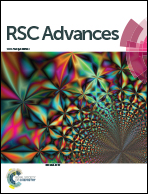Fabrication of a silica gel coated quartz fiber mesh for oil–water separation under strong acidic and concentrated salt conditions†
Abstract
A superhydrophilic and underwater superoleophobic mesh is prepared by compounding a quartz fiber with silica gel, and is further enhanced by adding 1,2-bis(triethoxysilyl)ethane and a high molecular weight polyacrylamide. Driven by gravity solely, the as-prepared mesh can separate oil–water mixtures with high efficiency in strong acidic and high salt conditions.


 Please wait while we load your content...
Please wait while we load your content...